If The Data Below Is From An Exponential Function, What Is The Value Of A?
What Are Exponential Functions?
Before nosotros become into dealing with exponential functions and graphing exponential functions, let's get-go accept a look at the general formula and theory behind exponential functions.
Below is one of the near general forms of an exponential graph:

The exponential function equation to this graph is , and is the most simple exponential graph we can brand. If you lot're wondering what would look like, here'south its exponential graph:
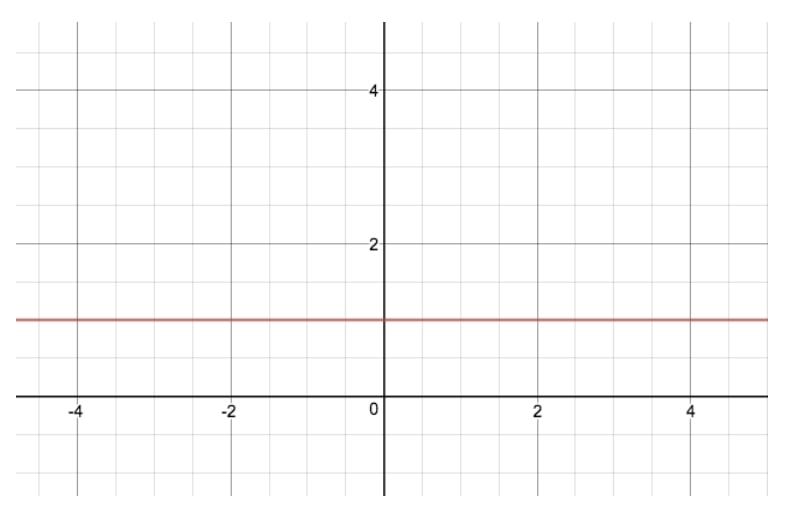
Now, as to the reason why the graphs of and are then different, the best way to understand the theory behind exponential functions is to take a look at some tables.
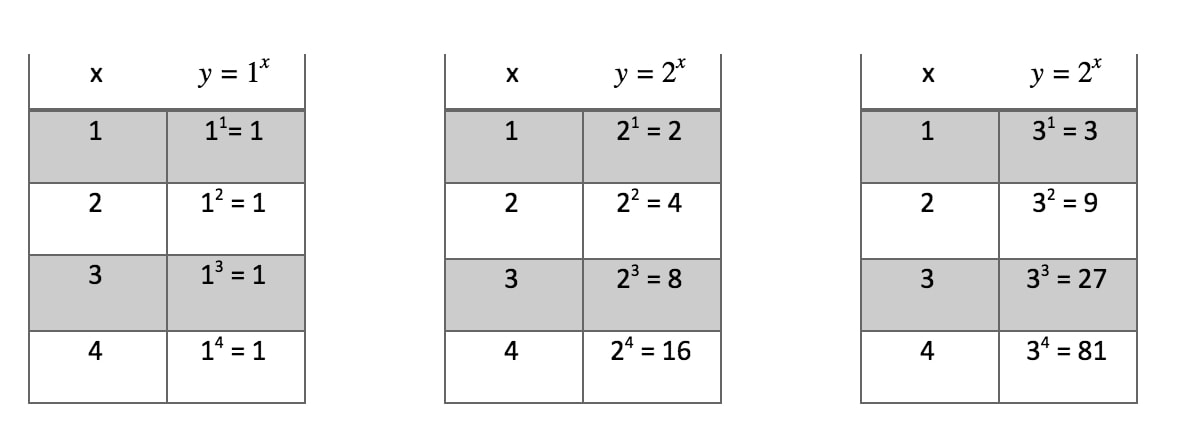
Above y'all can encounter three tables for three different "base values" – 1, 2 and 3 – all of which are to the power of ten. As you can see, for exponential functions with a "base value" of one, the value of y stays constant at 1, because ane to the power of anything is just 1. That is why the above graph of is simply a straight line. In the example of and (not pictured), on the other hand, we run into an increasingly steepening bend for our graph. That is because equally x increases, the value of y increases to a bigger and bigger value each time, or what nosotros call "exponentially".
Now that we have an idea of what exponential equations look similar in a graph, let's requite the full general formula for exponential functions:
The higher up formula is a little more complicated than previous functions y'all've likely worked with, and so let's define all of the variables.
y – the value on the y-axis
a – the vertical stretch or compression factor
b – the base value
x – the value on the x-centrality
c – the horizontal translation factor
d – the horizontal stretch or compression factor
thou – the vertical translation factor
In this lesson, we'll only exist going over very basic exponential functions, so you don't need to worry almost some of the above variables. Just, so you have access to all of the data y'all demand nearly exponential functions and how to graph exponential functions, let'southward outline what irresolute each of these variables does to the graph of an exponential equation.
1) Variable "a"
Let'due south compare the graph of to another exponential equation where nosotros modify "a", giving usa

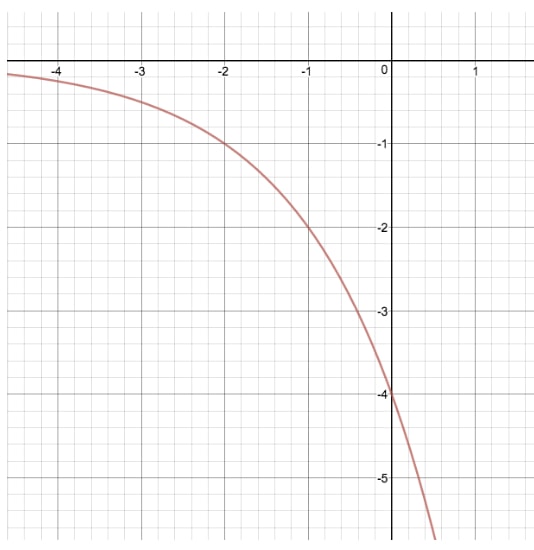
Past making this transformation, nosotros have both "stretched" and "reflected" the original graph of by information technology's y-values. In lodge to find "a" by looking at the graph, the most of import thing to detect is that when 10=0 and we don't have a value for "k", the y-intercept of our graph is always going to be equal to "a".
2) Variable "b"
As well known as the "base value" this is simply the number that has the exponent attached to it. Finding it involves algebra, which will be discussed later in this commodity.
Variable "c"
Let's compare the graph of to some other exponential equation where nosotros modify "c", giving usa

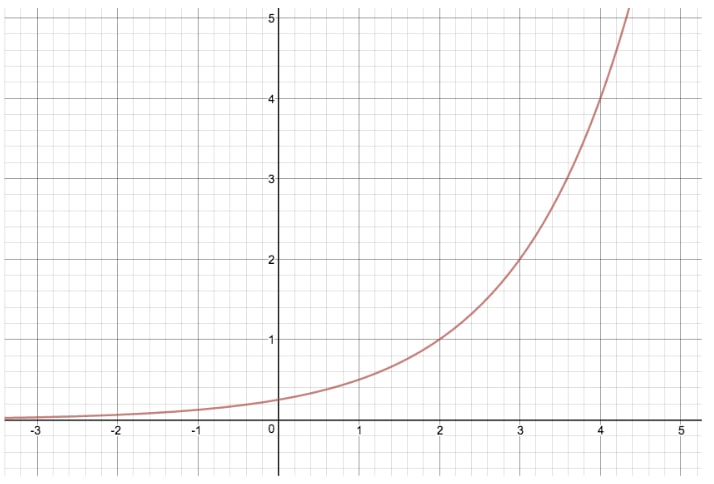
By making this transformation, nosotros have shifted the entire graph to the right ii units. If "c" was equal to -2, we would have shifted the entire graph to the left two units.
Variable "d"
Let'due south compare the graph of to another exponential equation where we change "d", giving u.s.a.

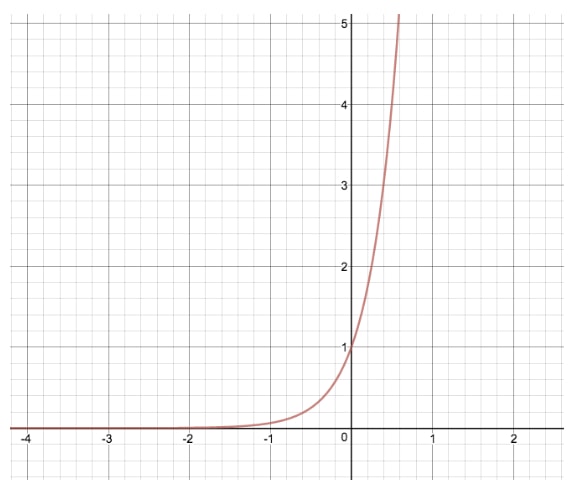
By making this transformation, we have stretched the original graph of by its x-values, similar to how the variable "a" modifies the function past its y-values. If "d" were negative in this example, the exponential function would undergo a horizontal reflection as opposed to the vertical reflection seen with "a".
Variable "k"
Permit's compare the graph of to some other exponential equation where we modify "k", giving us


Past making this transformation, nosotros accept translated the original graph of up two units. If "k" were negative in this case, the exponential function would accept been translated downward 2 units. "k" is a particularly important variable, equally it is also equal to what we call the horizontal asymptote! An asymptote is a value for either 10 or y that a function approaches, merely never actually equals.
Take for instance the function : for this exponential function, k=0, and therefore the "horizontal asymptote" equals 0. This makes sense, because no affair what value we put in for x, nosotros will never get y to equal 0. For our other office , grand=2, and therefore the horizontal asymptote equals 2. There is no value for ten we tin use to make y=two.
And that's all of the variables! Again, several of these are more complicated than others, and then information technology will take time to become used to working with them all and becoming comfortable finding them. To get a better await at exponential functions, and to become familiar with the above general equation, visit this fantabulous graphing estimator website hither. Accept your time to play effectually with the variables, and get a better feel for how changing each of the variables furnishings the nature of the function.
Now, let'southward get down to business. Given an exponential office graph, how can we discover the exponential equation?
How To Notice Exponential Functions
Finding the equation of exponential functions is often a multi-footstep process, and every problem is different based upon the information and blazon of graph nosotros are given. Given the graph of exponential functions, we demand to be able to have some information from the graph itself, and then solve for the stuff we are unable to take directly from the graph. Below is a listing of all of the variables we may accept to await for, and how to usually observe them:
a – solve for it using algebra, or it will be given
b – solve for it using algebra, or it will exist given
c – let ten = 0 and imagine "c" is not there, the value of y will equal the y-intercept; at present count how many units the y value for the y-intercept is from the y-axis, and this will equal "c"
d – solve for it using algebra
grand – equal to the value of the horizontal asymptote
Of class, these are only the general steps y'all need to accept in society to notice the exponential function equation. The best way to larn how to do this is to try some practise bug!
Exponential Functions Examples:
At present permit's effort a couple examples in order to put all of the theory we've covered into exercise. With practise, yous'll be able to observe exponential functions with ease!
Example 1:
Determine the exponential part in the form of the given graph.
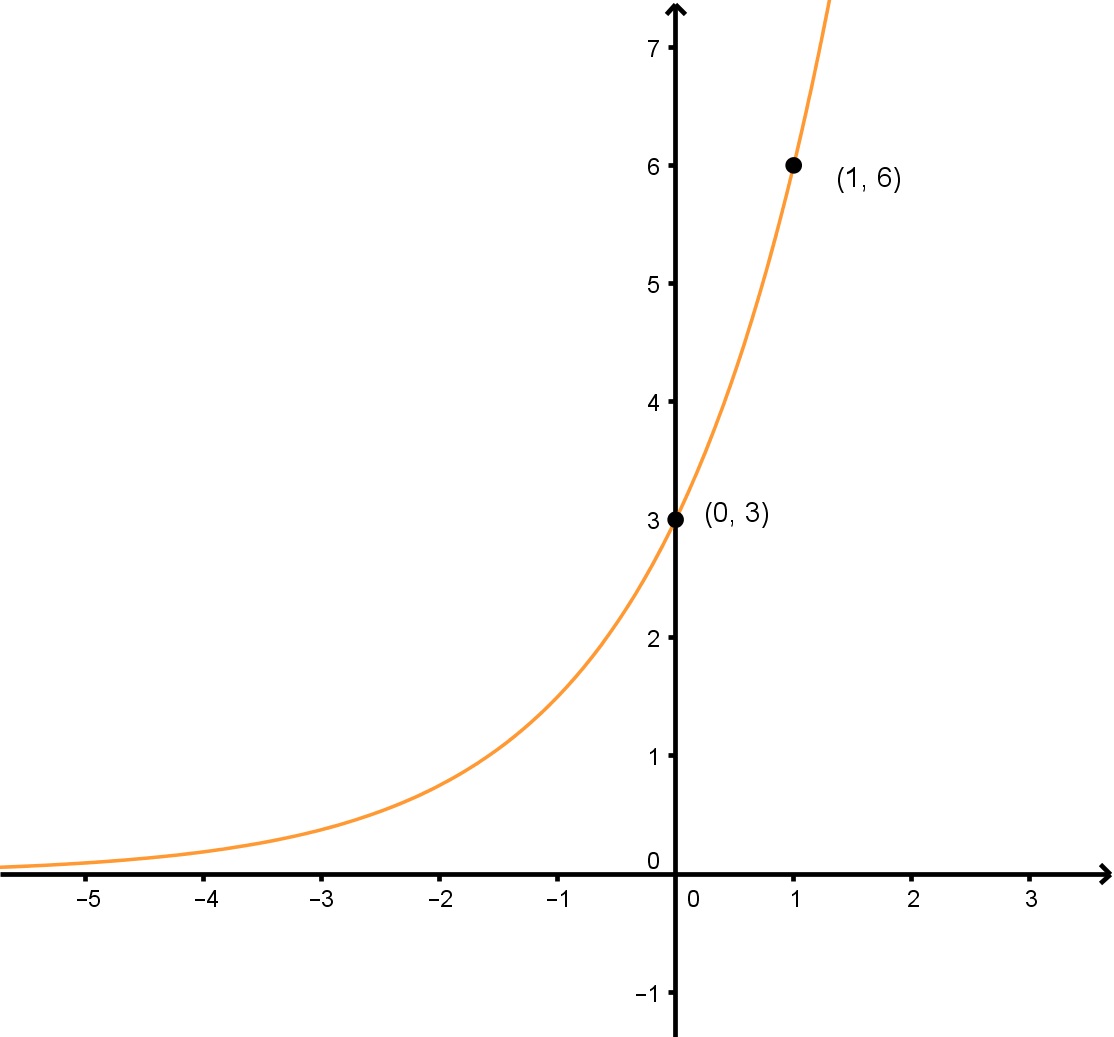
In gild to solve this trouble, we're going to demand to find the variables "a" and "b". Besides, we're going to have to solve both of these algebraically, every bit we can't determine them from the exponential part graph itself.
Step ane: Solve for "a"
To solve for "a", we must selection a signal on the graph where we can eliminate bx because we don't yet know "b", and therefore we should pick the y-intercept (0,3). Since b0 equals 1, we can find that a=3. Equally a shortcut, since we don't' take a value for k, a is merely equal to the y-intercept of this equation.
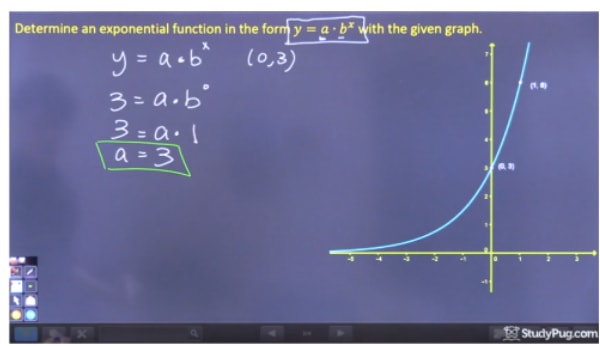
Pace 2: Solve for "b"
Now that we accept "a", all we have to do is sub in 3 for "a", selection another point, and solve for b. Let'south pick the point (1,six). With all this information, we can detect that b=2.
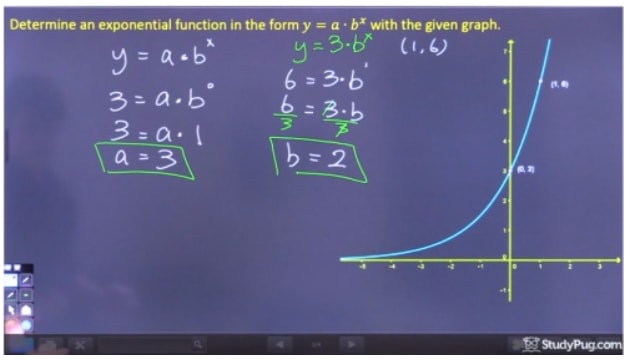
Stride 3: Write the Last Equation
Now we that we have institute all of the necessary variables, all that's left is to write out our final equation in the form . Our final answer is
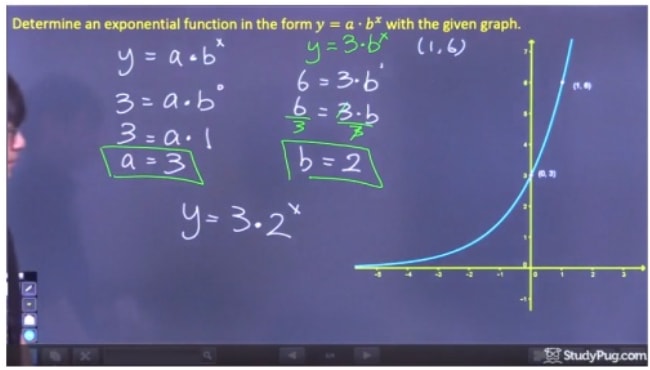
Case two:
Determine the exponential part in the form of the given graph.
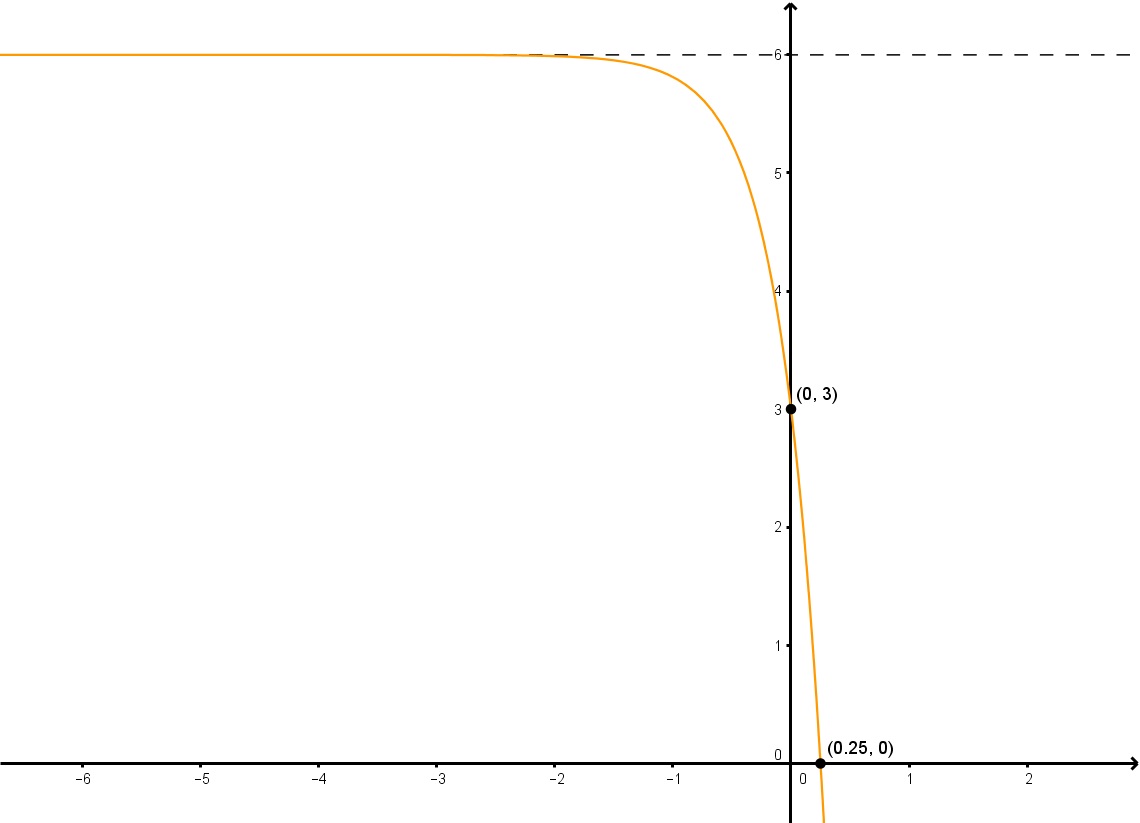
In club to solve this problem, we're going to need to find the variables "a", "d" and "g". Remember, nosotros tin find "k" from the graph, as information technology is the horizontal asymptote. For "a" and "d", however, we're going to have to solve for these algebraically, as we can't determine them from the exponential function graph itself.
Step one: Find "k" from the Graph
To find "1000", all we need to do is find the horizontal asymptote, which is clearly y=6. Therefore, k=six.
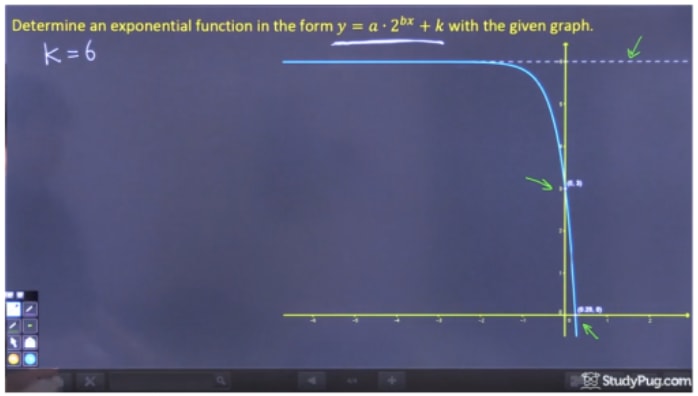
Step 2: Solve for "a"
To solve for "a", just like the last example, we must pick a signal on the graph where we can eliminate 2dx because we don't nonetheless know "d", and therefore we should pick the y-intercept (0,iii). Since 20 equals i, subbing (0, 3) into gives usa that a=-3.
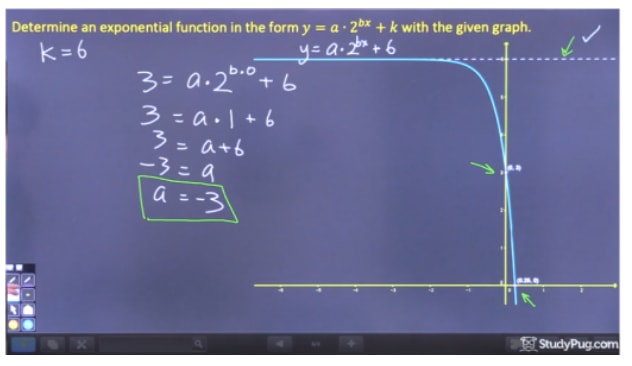
Step iii: Solve for "b"
Now that we accept "a" and "k", all we have to practise is pick another point and solve for b. Let's pick the indicate (0.25, 0). With all this information, we tin find that d=4.
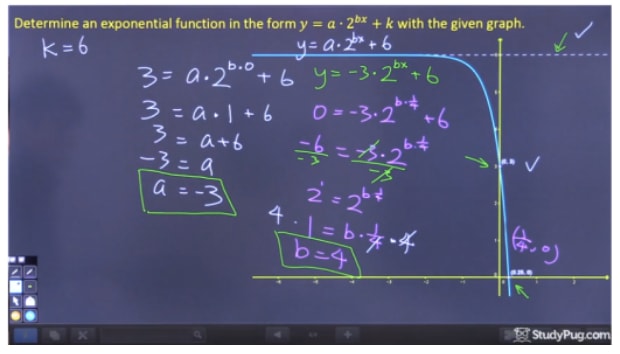
Step 4: Write the Final Equation
Now nosotros that nosotros have institute all of the necessary variables, all that'southward left is to write out our final equation in the form . Our final reply is

And that'due south it for exponential functions! Again, these functions are a piffling more than complex than equations for lines or parabolas, so be sure to do lots of practice problems to get a hang of the new variables and techniques. With more practise, soon exponential equations and the graphs of exponential functions will be no trouble at all!
If The Data Below Is From An Exponential Function, What Is The Value Of A?,
Source: https://www.studypug.com/algebra-help/find-an-exponential-function-given-its-graph
Posted by: vogelsaind1971.blogspot.com


0 Response to "If The Data Below Is From An Exponential Function, What Is The Value Of A?"
Post a Comment